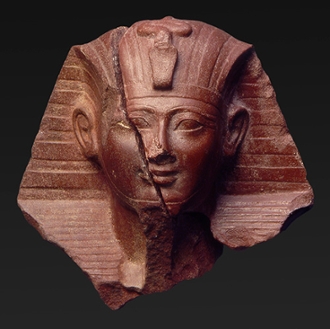Collection Ancient Egypt and Sudan
The items that the ancient Egyptians have handed down remain a source of wonder.
Pyramids, mummies, hieroglyphic script and idols appeal to the imagination. They tell us about the fascinating life of the ancient Egyptians and their ideas about the hereafter. A steady stream of new discoveries in the country has served to maintain this interest.
Ancient Egypt owes its position in the first instance to the River Nile that guarantees abundance in a land consisting for the rest of desert. The river’s annual flooding created a fertile Nile Valley where the first civilisations were created. The flooding meant that those living on the banks had to engage in managing the waters. A well organised empire arose that gave rise to the great pyramids of Cheops and Khafra, along with the pharaohs Akhenaten, Tutankhamun and Ramses II (the Great). After almost 2,500 years of civilisation, the Egyptian Empire was unable to withstand the Assyrians and the Persians and went into slow decline. Alexander the Great conquered the region with his army in 332. On the death in 30 BC of Queen Cleopatra, the last descendant of the Egyptian royal house, Egypt is made a province of the Roman Empire.
The focus of the collection is on the Amarna Period at the time of Pharaoh Akhenaten, the Graeco-Roman era and the Coptic Christian period. The textiles from the last period go to make up the largest collection in this field in the Netherlands.

